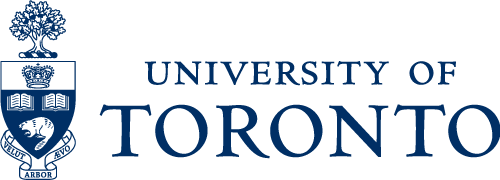This project, funded by eCampusOntario’s Ontario Exchange program, has developed open educational resources aimed at enhancing support for development and implementation of microcredential initiatives. The downloadable and editable materials linked below provide guidance on the ideation, development and implementation of microcredential programming within the university context, and have been derived from a diverse range of sources including eCampusOntario’s Microcredential Toolkit, Higher Education Quality Council of Ontario, and other organizations. A site map provides a suggested outline for institutions to develop their own customized, local microcredential toolkit.
Project resources are shared below as Open Educational Resources in adaptable file formats that may be repurposed for use by program leads, instructors, and administrators in higher education continuing education units across the province [Note: Information specific to University of Toronto administrative policy has been excluded from the OER resources].
University of Toronto community members will be able to access additional information via a new University of Toronto Microcredential Information Hub when it launches in the near future.
Sitemap
This site map example provides a graphic representation of content structure for guidance, process and policy resources for an Ontario university or college microcredential information site. The suggested outline may be useful for institutions in the process of developing their own customized, local microcredential toolkit. The attached site structure could be implemented as a website using the platform of choice for the development.
Ideation
On the ideation resource page, we provide guidance on initiating and developing microcredentials, beginning with the importance of a clear idea and initial analysis. The text delves into early steps, such as conducting gap analysis, engaging with local experts, and forming working groups, while also addressing key considerations like strategic intent, labor market demand, and alignment with institutional priorities. Additionally, the page outlines critical questions related to assessing capacity, learner demand, external partnerships, and contractual considerations, providing a thorough overview for individuals involved in microcredential design and delivery within an educational institution.
Proposal
On the proposal resource page, we provide guidance on planning a proposal for a new program, focusing on understanding the target audience or market and considering the “how” of building microcredentials. The text delves into the importance of identifying learning outcomes or competencies, engaging focus groups for assessment input, and implementing authentic assessment strategies to measure learner success in mastering specific skills or competencies. It provides insights into considerations like methodology alignment, collaboration with external partners, and the overall approach based on the project’s purpose and objectives.
Delivery
On the delivery resource page, we provide guidance on the key concepts and best practices for piloting and delivering a microcredential course. The content covers crucial aspects such as course outline development, timeframes for completion, identification of stackable microcredentials, showcasing achievements through digital badges, and considerations for prior learning assessment recognition (PLAR). Additionally, the importance of flexibility for learners is emphasized, emphasizing the self-directed nature of microcredentials and providing insights into effective timelines for completion and assessment submissions.
Accessibility
On the inclusive design and accessibility page we provide guidance on principles of effective microcredential course design to meeting your learners where they are. One way to reach our audience where they are is to use the principles of Universal Design for Learning (UDL) when developing microcredential courses.
Labour Market Demand
On the labour market demand page we provide support for applicants in assessing labour market demand information for new microcredential proposals to better support their successful submission to the Ministry of Colleges and Universities (MCU) and / or external funding opportunities. Labour market demand is a heavily weighted criteria for MCU when it comes to new programs, and a key characteristic of OSAP-eligible microcredentials.
Metadata
This downloadable Metadata Schema excel file contains an example metadata schema for institutional administrative management systems for microcredential course data and learner data.
Course Data Includes:
– Institutional Data: Recommended fields for Student Information Systems, course management and badging platforms.
– MCU fields (for OSAP reporting): Mapping of recommended institutional data fields to the Ontario Ministry of College and University requirements for OSAP submissions.
Learner Data Includes:
– Learner Information (Shaded Green): This section captures core details about the individual enrolled in the microcredential. It’s an essential foundation, detailing the learner’s personal and academic data.
– Enrollment Information (Shaded Yellow): This section provides a comprehensive record of the microcredentials a learner has either completed or is actively pursuing. It tracks progress and attainment.
– OSAP Submission (Shaded Red): Tailored specifically for students who have opted for OSAP, this section holds all the vital information for financial aid application processing.
Downloads
Each file is a downloadable and editable Word or Excel file (metadata schema). Only the site map example is a static PDF.
- Site Map Example
- Ideation Resource Page
- Proposal Resource Page
- Delivery Resource Page
- Accessibility Resource Page
- Labour Market Demand Resource Page
- Metadata Schema
Download all files in one zip folder
Instructional Design
Here you will find a suite of modules created in H5P that support the instructional design of microcedentials, including:
- Launching a Microcredential Design Process
- Identifying, Articulating, and Organizing Competencies for Microcredentials
- Demonstrating Competencies
- Engaging Students in Microcredential Experience
Principles of instructional design consider how educational tools should be designed, created and delivered to any learning group. These modules will support the development high-quality microcredential courses that address the objectives of both student and educator. The content is primarily based on the backward design framework, which focuses on the process of learning, encouraging the instructor to think intentionally about how activities and assessment will ensure that the course goals and learning objectives are met.
Launching a Microcredential Design Process
Identifying, Articulating, and Organizing Competencies for Microcredentials
Demonstrating Competencies
Engaging Students in Microcredential Experiences
 |
 |
Funded by the Government of Ontario.
We gratefully acknowledge eCampusOntario which has supported the completion of this project.
Our thanks to the following eCampusOntario Exchange service providers:
- Kyle Mackie – Consultation on developing draft Microcredential Metadata Schema
- SayYeah – Design and production of the U of T Microcredential SharePoint site
Content on this page is licensed under CC-BY and all materials have been designed to meet AODA accessibility standards.
The views expressed in this publication are the views of the authors and do not necessarily reflect those of the Government of Ontario or the Ontario Online Learning Consortium.
For more information please contact digital.learning@utoronto.ca

